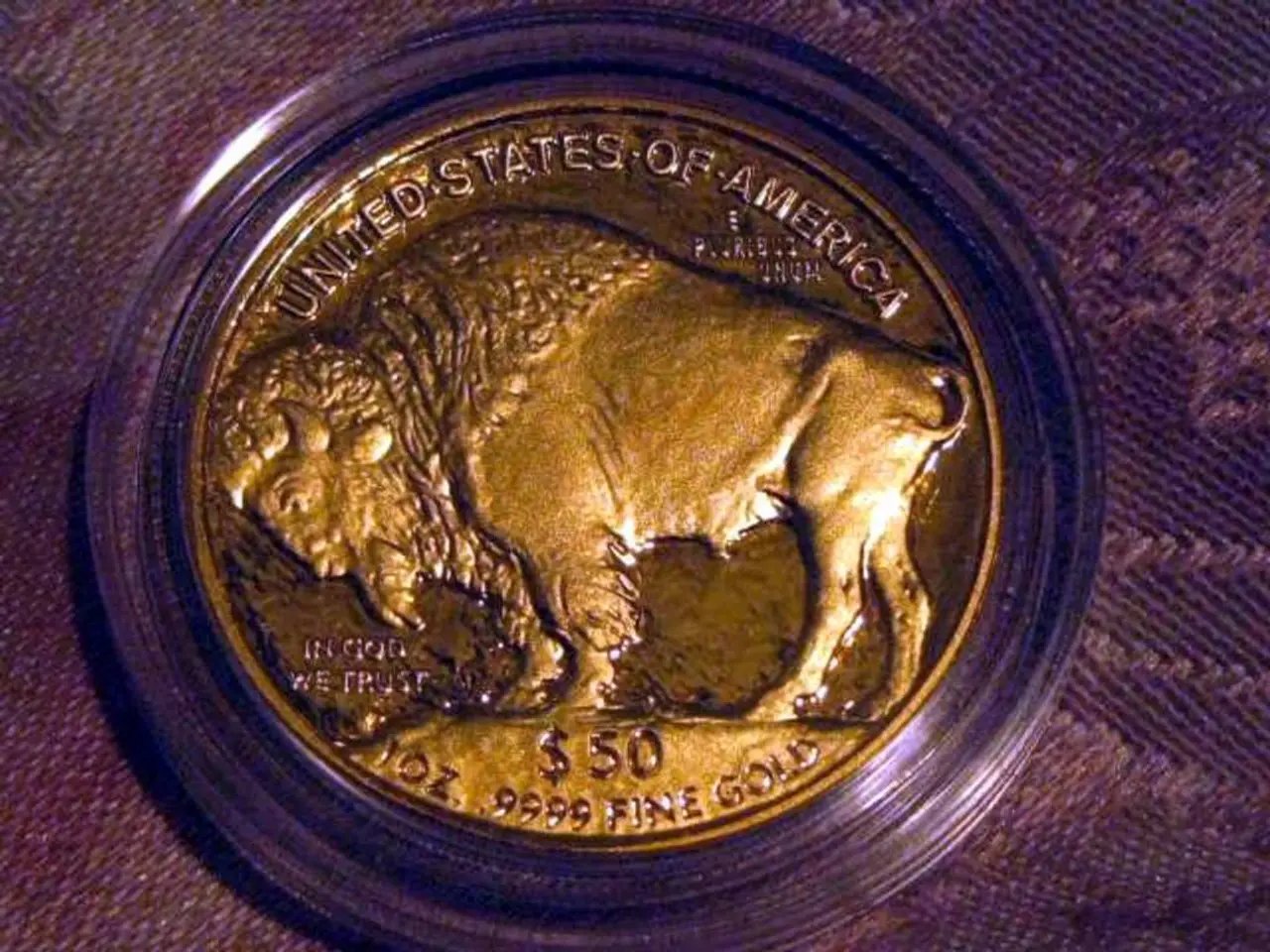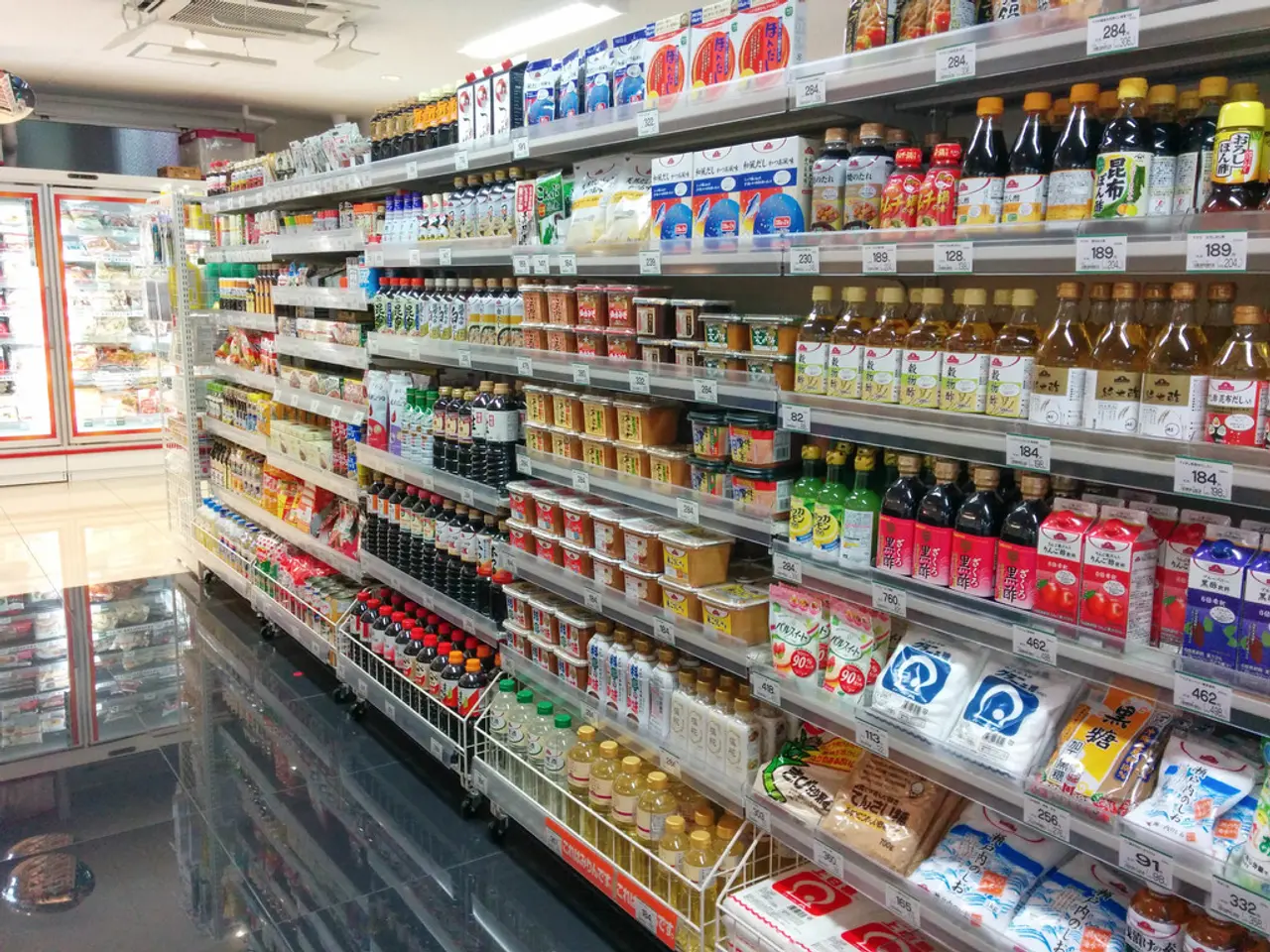Prices increase significantly in June, reflecting the influence of Trump's tariffs on market costs.
In a recent turn of events, the United States is experiencing an inflation rate higher than the Federal Reserve (Fed) would prefer, a development that contrasts with the direction promised by President Trump during his campaign. This inflation, in part, is attributed to President Trump's tariffs, which are making it harder for the Fed to bring inflation under control.
The president's tariffs, aimed at protecting domestic industries, have led to increased prices for a variety of goods, as evidenced by the June inflation report. If Trump's threatened tariffs on multiple countries for August 1 are implemented, prices could increase further. Economists predict that inflation will reach between 3% and 3.5% by the end of the year.
President Trump has expressed dissatisfaction with the Federal Reserve's response to the inflation, urging Jerome Powell, the leader of the Fed, to cut interest rates more quickly. However, the federal government's interest expense is closing in on $1 trillion this year, a figure that could rise due to tax cuts and spending increases. Lower interest rates could help reduce this expense, but the president is also trying to stimulate the economy by cutting the federal government's interest expense.
Investors are skeptical that Trump will follow through on his tariff threats, but even if they don't increase, import taxes are already at their highest level in nearly a century. Some of the cost of the current import taxes has been passed along to consumers, but financial analysts predict more tariff-driven price hikes in the months to come.
In response to these challenges, businesses and consumers can prepare for potential inflation stemming from increased tariffs and the related impact on interest rates by adopting strategic financial and operational measures.
For businesses, strengthening pricing power, revisiting product offerings, updating financial forecasts and crisis plans, and managing working capital rigorously are key strategies. Consumers, on the other hand, can lock in major purchases early, stock up on essentials prudently, and be mindful of debt.
By proactively strengthening pricing, managing costs and inventory, securing financing options, and timing purchases strategically, both businesses and consumers can better withstand the inflationary effects caused by tariffs and interest rate fluctuations. It is important to note that the current level of inflation is not as high as the 9% inflation seen in 2022.
[1] Adapted from: https://www.forbes.com/sites/forbesbusinesscouncil/2021/03/26/5-ways-to-prepare-your-business-for-inflation/?sh=434b3b1524d3 [2] Adapted from: https://www.bankrate.com/finance/inflation/how-to-cope-with-inflation/ [3] Adapted from: https://www.forbes.com/sites/forbesbusinesscouncil/2021/03/26/5-ways-to-prepare-your-business-for-inflation/?sh=434b3b1524d3 [4] Adapted from: https://www.investopedia.com/terms/i/inflation.asp
- The increased tariffs imposed by President Trump are causing prices for various goods to rise, as evidenced by the June inflation report, making it difficult for the Federal Reserve to control inflation and affecting the general-news of economy and politics.
- Complete implementation of Trump's threatened tariffs on multiple countries for August 1 could further increase prices, following the current inflation trend predicted to reach between 3% and 3.5% by the end of the year, impacting both businesses and consumers in their finance and operations.
- As investors remain uncertain about the tariff threats, it is essential for businesses and consumers to take proactive measures to withstand the inflationary effects caused by tariffs and interest rate fluctuations, such as strengthening pricing power, managing costs and inventory, securing financing options, and timing purchases strategically, as seen in strategies suggested by financial experts in the fields of business and economics.




